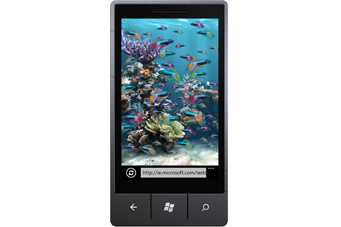| Mango is Windows Phone 7.5 |
| Written by Harry Fairhead | |||
| Monday, 25 April 2011 | |||
|
While many of us only see the iPhone and Android as development potentials you do have to keep an eye on what Microsoft is up to with Windows Phone (WP). For one thing Microsoft has made something of a habit of not getting the product right until late in its upgrade history. The rule is that first versions are often a disaster... Could it be that now the idea has taken root because the fairly modest upgrade to WP 7 announced at MIX, codenamed Mango, has now been elevated to WP 7.5 - which, if you recalibrate to the correct starting point would make it version 1.5, i.e. well on the way to 2.0. So what makes this a 0.5 increment? There seem to be three "big" additions/improvements. The first is multi-tasking but it is difficult to work out exactly what this means. All phone environments are poor at multi-tasking in the traditional sense and the reason given is simply that the hardware isn't up to it. WP7 supported a version of multi-tasking that was so primitive that it really didn't deserve the name - apps are simply suspended and then reactivated. This is simple but the downside is that it leaves all of the state management to the app itself and this is not what a good OS should do. When you consider that WP has some of the most powerful hardware available it is difficult to see why it is stuck with such primitive multi-tasking. Mango is supposed to bring improved multi-tasking to WP but details are very vague: Multitasking is also enhanced to allow for fast applications switching, as well as background audio and file transfer. Being able to run background audio and file transfers brings WP up to what you can do in Android and iOS 4. It was originally argued that fast application switching is all users really needed but having music stopping just because you switch to send an SMS is annoying. Background operations are a natural evolution for any phone OS. The second big area of improvement is supposed to be Phone integration. Mango is supposed to provide better access to UI features such as Live Tiles and push notifications. In case you missed it, Live Tiles was a unique feature in WP 7 but seen as a good enough idea for Apple to copy it and no doubt Android will soon. Live Tiles aren't rocket science because they are just icons your app can dynamically update. The problem is that they have been difficult to work with and Mango promises to fix this and allow them to be used in additional ways. It is all vague. What isn't vague is the promised developer tools upgrade. The key improvement is the ability to merge Silverlight and XNA in the same project. This has been possible for the adventurous developer already, but now we have an official way of doing it. Given Silverlight 5 has a 3D canvas provided by the XNA subsystem it would be surprising if Mango didn't work in the same way. Is this important? The ability to add Silverlight controls to an essentially 3D app should make it easier to create better UIs in games and the like. Adding 3D to what would otherwise be a Silverlight app is more tricky to evaluate but it clearly isn't for everyone. The list of other improvements just make you think "why wasn't this already included?". For example, access to the calendar and contacts from an app is fairly basic, as is a SQL database and access to the motion sensor. Overall it still seems that Mango or WP 7.5 is in the business of playing catch up and fixing things that were left out of the first version.
Is it all fixed by WP 7.5? It seems unlikely given the modest step that it is. Nokia, however, is taking WP 7.5 as the basis for its new phones and so we will have to wait and see if these are any more attractive to the end user. The big problem with Windows Phone is that fact that despite it having "Windows" in its name there isn't very much that is Windows-like in its uses or its applications. It certainly isn't your desktop in your pocket and it doesn't integrate much better than non-Windows based devices. One last thought. Google has made Android seem far more friendly by giving the versions attractive code names like "Honeycomb" and "Froyo" and hasn't dumped them in favour of version numbers. Apple has just stuck to version numbers. Microsoft on the other hand has tried to use both strategies - Mango and Windows Phone 7.5. Which is the better approach? In this case it is clear that the stress on 7.5 indicates that this really isn't a second generation of Windows Phones - for that we have to wait for 8.0. Related articles:New Windows Phone developer tools with Mango New features in Windows Phone 7 The fall of Windows and the rise of Android The Developer World Doesn't Love Windows Phone 7
|
|||
| Last Updated ( Monday, 25 April 2011 ) |

